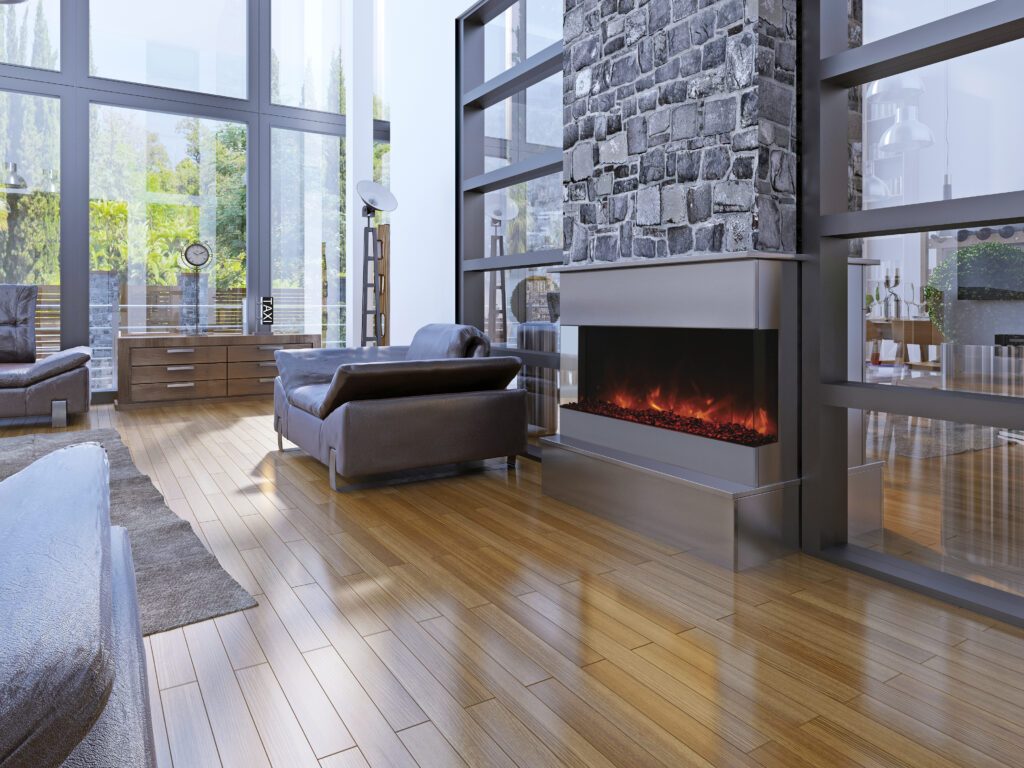Electric fireplaces have acquired gigantic fame lately as a flexible and stylishly satisfying option in contrast to conventional wood or gas chimneys. These inventive warming gadgets give the glow and feel of a genuine fire without the issue of overseeing logs or managing the outflows related to wood-consuming chimneys. While they do offer various benefits, one basic angle that mortgage holders ought to consider is their energy effectiveness. In this article, we will dive into the universe of electric fireplaces, investigating their energy proficiency exhaustively. We’ll talk about how they contrast with other warming choices, the variables influencing their proficiency, and tips to expand their presentation while expanding solace and investment funds.
What are Electric Fireplaces
Before delving into their energy efficiency, it’s essential to understand how electric fireplaces work. These simulate the appearance of a traditional wood-burning or gas fireplace through a combination of lighting effects and the use of heating elements. They typically consist of the following components:
Heating Element
Electric fireplaces incorporate a built-in heating element, which can vary in type. Some models use infrared quartz heaters for gentle, even warmth, while others employ ceramic heating coils for rapid heating. This versatility ensures these fireplaces can suit various preferences and room sizes, providing both aesthetic appeal and efficient heating capabilities for a cozy and comfortable living space.
Flame Simulation
Electric fireplaces excel at recreating the ambiance of a genuine fire with their LED lights. These lights generate remarkably realistic flame effects, offering adjustable options for intensity and color. This customization capability allows you to set the perfect mood and atmosphere in your living space, combining the charm of a traditional fireplace with modern convenience and control.
Remote Control
For added convenience, most of them are equipped with a user-friendly remote control. This handy device empowers users to effortlessly tweak various settings, including heat output, flame appearance, and more, all from the cozy comfort of their couch or preferred spot in the room. This feature enhances the user experience, making it easy to create the ideal atmosphere and warmth without the need for physical adjustments.
Safety Features
Safety is a top priority in the design of electric fireplaces. These appliances commonly incorporate essential safety features such as automatic shut-off timers and cool-to-touch glass fronts. The automatic shut-off timers ensure that the fireplace doesn’t run unattended for extended periods, reducing the risk of accidents. Meanwhile, the cool-to-touch glass fronts offer peace of mind by preventing burns or injuries, making electric fireplaces a secure and family-friendly heating solution for any home.
Now that we have a basic understanding, let’s delve into their energy efficiency.
Factors Affecting Energy Efficiency
Several factors influence the energy efficiency of electric fireplaces. Understanding these factors is essential for making an informed decision when purchasing and using these appliances.
Heating Method
Electric fireplaces utilize either infrared quartz heaters or ceramic heating coils. Infrared heaters are often more efficient because they emit heat in the form of infrared radiation, which warms objects and people directly rather than heating the air. Ceramic heaters, while effective, may consume slightly more energy to achieve the same heating effect.
Size and Insulation
The size of the room and its insulation play a significant role in the energy efficiency of them. A well-insulated room retains heat better, allowing the fireplace to work more efficiently. Additionally, larger rooms may require electric fireplaces with higher wattage to maintain a comfortable temperature.
Temperature Control
Electric fireplaces often come with adjustable temperature settings. Setting the thermostat at a comfortable level can help optimize energy usage. Using the fireplace to supplement existing heating systems, rather than relying solely on it, can also lead to greater efficiency.
LED Flame Effects
While the LED flame effects of electric fireplaces contribute to their aesthetic appeal, they consume minimal energy compared to the heating element. Users can enjoy the ambiance of the flames without a significant impact on their energy bills.
5. Energy Consumption Ratings
Manufacturers typically provide energy consumption ratings for their electric fireplaces. These ratings can help consumers compare models and choose more energy-efficient options. Look for the fireplace’s wattage and check for certifications from energy efficiency organizations.
Energy Efficiency Benefits
Electric fireplaces boast numerous energy efficiency advantages over traditional counterparts. They produce no emissions, minimize environmental impact, and can heat specific areas, saving energy and costs compared to central heating systems.
Zoned Heating
Electric fireplaces allow for zoned heating, meaning you can heat specific rooms or areas without heating the entire house. This targeted approach can lead to energy savings by avoiding unnecessary heating.
No Heat Loss
Electric fireplaces outperform wood-burning counterparts in efficiency. They don’t suffer heat loss through chimneys or vents, channeling all generated warmth into the room, ensuring maximum heating efficiency.
Energy-Efficient Lighting
The LED lighting used for flame simulation consumes minimal energy, making electric fireplaces an efficient choice for creating ambiance without driving up electricity bills.
Low Maintenance
Electric fireplaces require minimal maintenance compared to wood or gas fireplaces. There’s no need for chimney cleaning or fuel replenishment, which can save time and money in the long run.
Conclusion
Electric fireplaces offer a convenient and energy-efficient heating solution for homeowners seeking both warmth and ambiance. While their energy efficiency can vary based on factors such as heating method, size, and usage habits, they generally provide benefits such as zoned heating, minimal heat loss, and low maintenance requirements. By understanding the factors affecting energy efficiency and implementing best practices, you can enjoy the comfort and aesthetic appeal of an electric fireplace without excessive energy consumption. Remember to check energy consumption ratings and choose a model that aligns with your heating needs and preferences.


